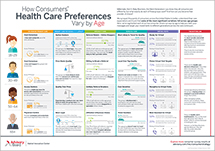Auto logout in seconds.
Continue LogoutMedical touch is an often overlooked and underappreciated part of health care—but the way a provider physically interacts with a patient can mean the difference between a "soothing or traumatizing" experience, Caitlin Kelly, a former cancer patient, writes for the New York Times' "Well."
Kelly's story
Kelly writes that the road leading up to her diagnosis of ductal carcinoma in situ, a version of breast cancer that comes with a 98% survival rate, was a fearful one that included a rotating door of different medical providers who had to touch and probe of her breast, "normally a private and hidden body part," as part of her treatment.
However, Kelly writes that she appreciated "the thoughtfulness with which I was touched," stating that it "made a real difference in my ability to stay calm and lie still as needed. My anxiety, even as a middle-aged adult, wasn't just an annoyance to be ignored or dismissed."
Why touch is important
How a provider physically interacts with a patient can have a significant effect on a patient's health and overall experience, Kelly writes. She notes this is particularly important with the advent of EHRs, "when physicians can spend most of an appointment staring into a computer screen."
Kelly quotes several experts who've publicly discussed the significance of a provider's touch. She notes Paul Stepansky, a historian and author, who said, "Touch promotes trust, not just talking or ordering studies." Similarly, Abraham Verghese, a professor at the School of Medicine at Stanford University, in a 2011 TED Talk said a physician's role is "to touch, comfort, diagnose, and bring about treatment."
And touch was key for Natasha Walsh, a political consultant in Virginia who has Crohn's disease, Kelly writes. Walsh recounted an experience at Washington Hospital Center in which a bowel resection had "gone horribly wrong," leading Walsh to become "completely septic and … in a medical coma for about a week."
When Walsh woke up, she was so weak that she "could barely roll over"—but she remembered "thinking how overwhelmed with gratitude [she] was" for the male nurse who gently helped her move in place for CT scans and MRIs. By contrast, Walsh said she stopped seeing a different provider solely "because he never once physically examined me. He was almost too clinical."
However, Kelly also points out that part of the challenge facing a patient is "not knowing how every physician, nurse, and medical technician will treat them, even as [they're] in pain and already anxious." She notes that touch of any kind can be particularly traumatic for individuals who've experienced violence.
Ultimately, Susan Finlayson, an RN and SVP of operations for Mercy Medical Center in Baltimore, said medical touch "should be a two-way conversation about what you're comfortable with." And providers must be cognizant of the significance of that discussion, Finlayson added.
Along the same lines, Kelly writes patients themselves must remember their own voice. She cites Mickey Osterreicher, a lawyer who was diagnosed with prostate cancer in 2011, who said, "Certainly as a patient you have every right to speak up," even if providers "bridl[e] at criticism" (Kelly, "Well," New York Times, 10/8).
Excellent patient experience is a critical piece of modern medicine, reflected clearly in outcomes. And more than amenities, clean rooms, or quiet during night, the factors that most inflect patient experience all relate to communication and coordination among the care team—factors that physicians are in a unique position to influence.
Clinician-patient communication, leadership of the care team, and support and empathy for the patient across the unit are the most important factors for success, and they're all driven by the physician as the "Influencer in Chief."
Don't miss out on the latest Advisory Board insights
Create your free account to access 1 resource, including the latest research and webinars.
Want access without creating an account?
You have 1 free members-only resource remaining this month.
1 free members-only resources remaining
1 free members-only resources remaining
You've reached your limit of free insights
Become a member to access all of Advisory Board's resources, events, and experts
Never miss out on the latest innovative health care content tailored to you.
Benefits include:
You've reached your limit of free insights
Become a member to access all of Advisory Board's resources, events, and experts
Never miss out on the latest innovative health care content tailored to you.
Benefits include:
This content is available through your Curated Research partnership with Advisory Board. Click on ‘view this resource’ to read the full piece
Email ask@advisory.com to learn more
Click on ‘Become a Member’ to learn about the benefits of a Full-Access partnership with Advisory Board
Never miss out on the latest innovative health care content tailored to you.
Benefits Include:
This is for members only. Learn more.
Click on ‘Become a Member’ to learn about the benefits of a Full-Access partnership with Advisory Board
Never miss out on the latest innovative health care content tailored to you.

